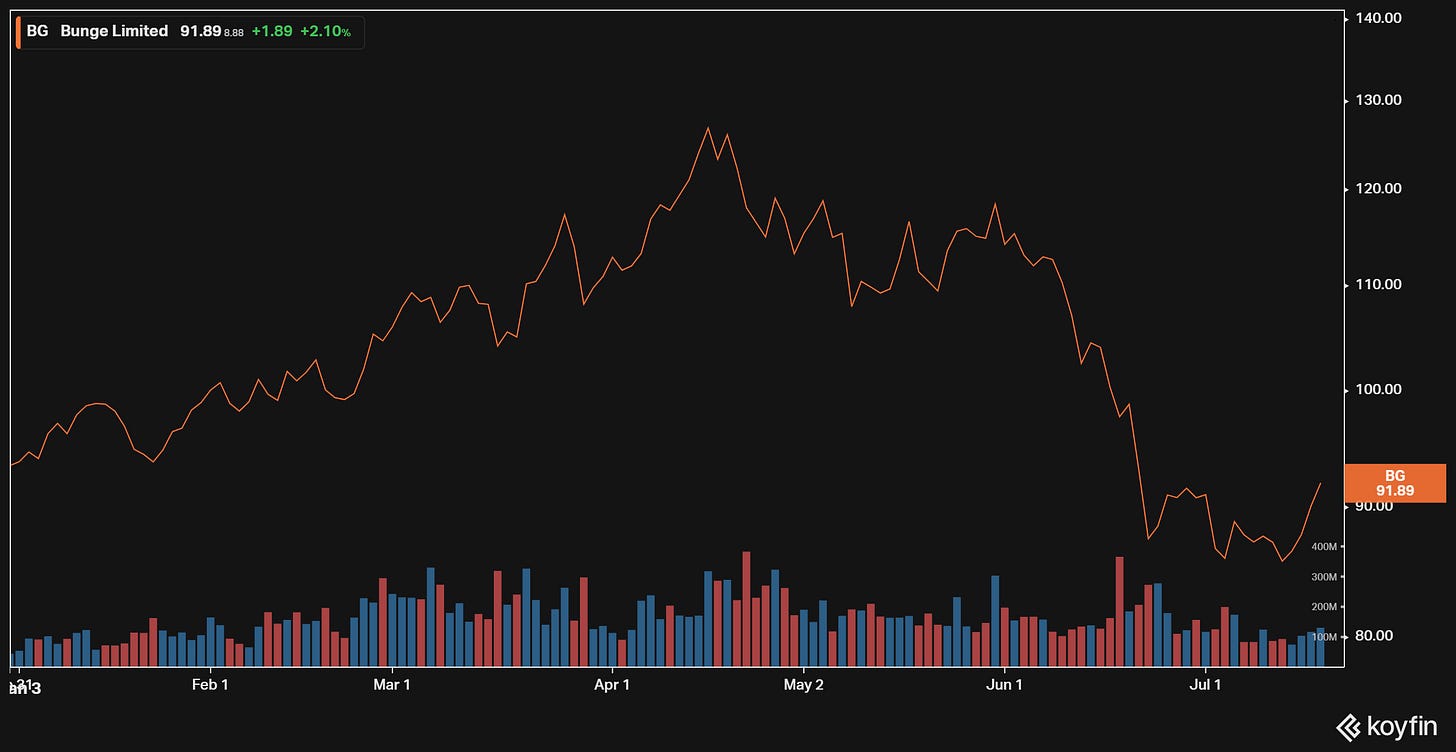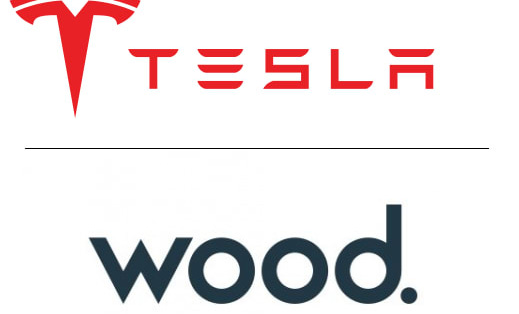Weekly Bulletin #22
PE Betting On Stagflation | Fink On Food Prices | Saipem Sell-Down
Disclaimer
Value Situations is NOT investment advice and the author is not an investment advisor.
All content on this website and in the newsletter, and all other communication and correspondence from its author, is for informational and educational purposes only and should not in any circumstances, whether express or implied, be considered to be advice of an investment, legal or any other nature. Please carry out your own research and due diligence.
Private Equity Betting On Stagflation?
Readers of the Weekly Bulletin will know I’ve recently been preoccupied with inflation and stagflation and the implications of both for public equities. With that in mind, I read with great interest a Bloomberg article last week regarding PE appetite for infrastructure assets as a potentially stagflationary bet.
Infrastructure assets typically generate income streams that are inflation (CPI)-linked, which combined with their real, tangible asset backing makes them attractive assets to own in the current inflationary environment. Furthermore, these characteristics also make infrastructure assets ideal for leveraging up, which is critical for driving PE returns, particularly against a backdrop of tightening credit conditions that is starting to slow PE deal-making.
Notable infrastructure assets that have recently attracted PE interest include:
Blackstone/Benetton family’s proposed takeover of Italian-listed infrastructure group Atlantia SpA (ATL) which owns airports, motorways and operates toll roads in numerous countries;
Brookfield/Digital Bridge’s acquisition of a 51% stake in Deutsche Telekom’s telecoms towers business (which itself attracted wide interest from PE)
Brookfield Infrastructure Partners’ acquisition of HomeServe Plc
KKR’s bid for UK Power Networks Holdings Ltd, a UK electricity distribution business (although this bid recently collapsed on valuation grounds)
A Macquarie Group-led consortium’s acquisition of a 60% interest in the gas transmission business of UK-listed National Grid Plc (NG)
Each of these deals involve hard to replicate, real assets that should benefit from a stagflationary regime (or at least hold their value) and I see these as further evidence of my Real Asset Ownership Complex thesis playing out. In that piece from last year I wrote that I felt inflation was more than a transitory phenomenon, and in that context I viewed the pivot by private capital “smart money” towards real assets as instructive in the transitory vs. structural inflation debate at the time.
In addition to the above, another notable news item this week further suggests the “smart money” is betting on inflation to continue for some time to come, namely the news that Berkshire Hathaway now owns ~20% of Occidental Petroleum (OXY). Given the scale of Berkshire’s position in OXY and the fact that OXY’s production is unhedged (and so exposed to higher oil and gas prices), I believe Berkshire has essentially made a high-conviction levered bet on higher energy prices for the forseeable future.
Amid the recent sell-off in commodities leading some analysts to declare that inflation has peaked, I believe this recent “smart money” transaction activity suggests otherwise. In my view, the implications of this for public equity investors is clear - selected equities linked to commodities, energy and real assets likely represent an area of opportunity in the coming months.
Fink On Food Prices
Despite the reversal in commodity prices recently, the food inflation/crisis theme remains very much in play. BlackRock CEO Larry Fink told the FT this week that food prices should be of more concern than fuel prices, stating:
“We talk a lot about gasoline prices because that’s what affects Americans but the bigger issue is food,” Fink said. “There has been tremendous destruction of arable land in Ukraine.....Globally the cost of fertiliser is up almost 100 per cent and that additional cost is reducing the amount of fertiliser used in farming. That is harming the quality of the crop worldwide.”
As I discussed in my Food for Thought series back in January, oil has a strong positive correlation with crop prices, given that it is a critical input throughout the agricultural supply chain - essentially an inflationary outlook for oil is an inflationary one for crops and food prices as well.
Since then, the war in Ukraine has further disrupted the global food supply, with the catastrophic implications of the conflict for Ukraine’s crop now becoming all too clear - the FT this week reported that Ukrainian farmers could plant up to two-thirds less wheat this year if the country’s export routes remain blocked by Russia (in addition to Russian bombing of Ukrainian farmland), exacerbating what is now a global food crisis (recall that Ukraine is the world’s sixth largest wheat exporter).
In my Food for Thought series, I identified Bunge Limited (BG) as a public equity play on this food inflation/scarcity theme and it has had quite a ride since then, initially appreciating ~35% to almost $127/share by mid-April, before retracing back to the low $90s currently:
Notably, BofA recently upgraded BG to a Buy rating, given what it cited as favorable long-term fundamentals, as well as offering a better risk/reward profile vs. larger peer ADM, something I previously highlighted as part of my BG thesis back in January.
Despite the favourable fundamentals, BG appears undervalued at just ~7x EBITDA vs. ~10x for ADM, and ~10x for a recent private market comp transaction, Viterra’s acquisition of Gavilon’s grain business.
Given the outlook for food prices and commodity inflation, BG continues to look very interesting in my view.
Saipem Sell-Down
Italian oilfield engineering services business Saipem SpA (SPM) completed a difficult capital raise process last week, and now looks like to be a highly speculative but interesting turnaround situation.
The background story to SPM’s current situation is somewhat convoluted but long-story-short, the broad sequence of events is as follows:
In January SPM issued a profit warning before reporting a disastrous set of FY21 results that shocked the market, with a -€1.1bn EBITDA loss due to the write-down of its contracts backlog due to higher costs, lower revenues and project delays resulting in lower expected project margins.
As a result of the FY21 loss, in March SPM announced a new €2bn capital raise and turnaround plan, which also involved a reverse share split. Post share-split SPM had ~21m shares in issue, which was then diluted 99% by the issuance of 1.974bn new shares at a price of €1.01/share under the raise which completed last week.
The raise saw only €1.4bn / 70% of the new shares being subscribed for, including SPM’s controlling shareholders Italian energy major ENI (ENI) and Italian-state investment bank CDP Industria S.p.A participating pro-rata up to their combined ~44% holding in SPM.
As a result of this shortfall, SPM’s underwriting bank consortium had to absorb the ~30% / 584m unsubscribed for shares at the €1.01/share placing price, with SPM’s subsequent market price trading down -29% to ~€0.72/share since then:
Source: Bloomberg
On an adjusted basis reflecting the reverse stock split and new share issuance, SPM is down ~85% YTD and has seen very heavy selling volume since the capital raise completed last week. Moreover, the share price is likely to drop further given the enormous overhang in the stock, as the underwriters will be looking to offload their “shortfall” shares as soon as possible.
The situation now is that post-capital raise, SPM has an EV and market cap of ~€1.4bn, with the €2bn in new cash raised offsetting its ~€2bn in net debt.
However as part of its turnaround strategy, SPM has also agreed asset disposals with a total value of ~€600m, comprising the sale of its FPSO Cidade de Vitoria vessel and its onshore drilling business. Therefore on a PF basis including these receivables, SPM’s PF EV is ~€800m, which implies that it is now valued at ~2x FY22 EBITDA after stripping out the onshore drilling segment EBITDA. Assuming SPM re-rates to a normalised 4x - 5x EBITDA range in time (supported by its ~€24bn project backlog), there is potentially multibagger upside here.
However this comes with some major caveats - SPM is a known basket case of a stock and has been here before with a similar under-subscribed capital raise back in 2016, which did not result in a major re-rating of the stock. In addition, there is the obvious question of management competency given project write-downs and the risk of further project write-downs eroding earnings again as the company works through it’s backlog.
That said, the depressed valuation today (which may become even more depressed as the overhang unwinds) combined with the supportive backdrop for energy and energy security, plus the fact that SPM continues to win major contracts suggests this is a situation worth monitoring.
Any Other Business
In keeping with my current focus on commodities and inflation, for this week’s AOB I wanted to highlight an interesting Real Vision discussion between Andreas Steno Larson and Luke Gromen from earlier this week about the ongoing energy (gas) crisis in Europe.
At about the 26 minute mark in the discussion, Gromen articulates so well how a “second wave of inflation” is likely beyond the recent rollover in commodities amid recession fears:
“I'm still not seeing a lot of people talk about the second derivative of this, which is, if there's not enough gas, there's not enough energy, European supply chains are going to break down… when that happens, global CPI is going to go up again… once that second wave of inflation hits from the global supply chain break down that will happen if the Europeans have to shut down their production facilities, because again, ... Europe makes so much ... you take out their supply, supply chains are going to collapse again, just like they were a year ago now ... and when that happens, we know what happens to CPI now. It goes up 600 basis points ”
This chimes with my sense that markets are mostly focused on demand destruction currently ( due to recession plus higher rates), while overlooking what seems like structural supply constraints for energy and related commodities.
Simply put, even with a slowdown or a recession, the lights, heating, factories, food production etc. still need to be switched on (as they did post-GFC). In addition, we are entering a new era of increased defense-spending, onshoring/rebuilding of supply chains, deglobalisation and new energy investment, all of which requires more energy and key commodities such as metals (base and green) - and all of which cannot be procured from major producer Russia.
Therefore a second wave of sustained inflation is likely in my view, regardless of the growth outlook.
Why Not Subscribe to the Paid Tier?
If you find the ideas in this newsletter interesting, please considering signing up to the newly launched Paid Tier.
You can read more about the paid offering here.
This newsletter is 100% reader supported and free from conflicts of interest or other commercial considerations. In writing Value Situations my job is essentially to generate ideas for subscribers that supplements their own idea origination process.
Furthermore, I believe the value proposition for paying subscribers is compelling. I am a former private equity/special sits investor that has worked with one of the largest alternative investment firms in the world, and so paying subscribers will be getting thoughtful, buy-side quality ideas and analysis for a very small fraction of the cost of employing a buy-side analyst full-time.
If you find this newsletter interesting, please also consider sharing it with friends and colleagues by clicking the Share button below.
Here’s what other investors are saying about Value Situations:






Value Situations was named as one of the Top 100 Must Follow Stock Research accounts by Edwin Dorsey of The Bear Cave Newsletter:

















